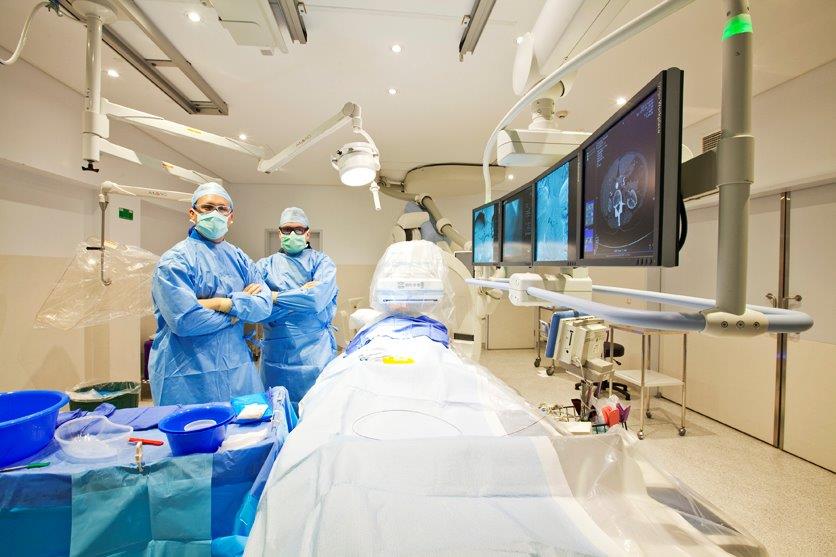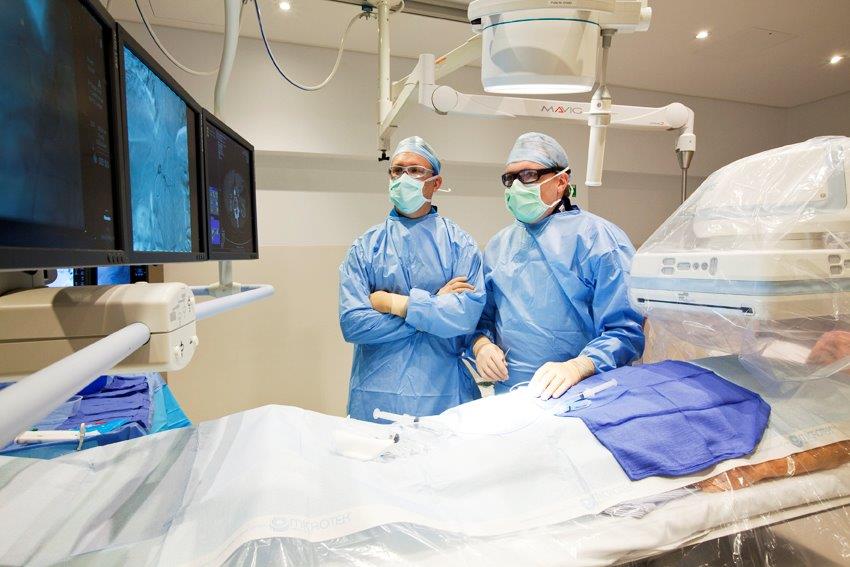
What is Embolisation?
Embolisation is the process of blocking off a vessel, either to stop bleeding, slow tumour growth or destroy tumour. A range of materials can be used in embolisation including coils, plugs, and liquids; your interventional radiologist will choose the embolic material that is best suits for you. Interventional radiologists are the only specialists who are trained to use the full range of embolics.

Why perform Embolisation?
Renal embolisation may be helpful for patients with benign tumours, such as angiomyolipoma (AML), to destroy their blood supply to prevent them from bleeding or rupturing. It can also be helpful for patient with malignant tumours (such as renal cell carcinoma (RCC) or transitional cell carcinoma (TCC)) with problematic bleeding in patient who are not suitable for surgery.

How does Embolisation work?
This procedure may be done through either the artery in the wrist or groin, usually under sedation. After an angiogram is performed, a small catheter is guided into the arteries supplying the tumour, through which a small volume of embolic or sclerosant is injected. This blocks off the blood supply to the tumour, causing it to shrink and reducing the risk of bleeding.
Contact Us
appointments:
For appointment requests, please phone 0497 052 070. For general enquiries, please complete the contact form and a member of the VIRQ team will respond shortly.
Address:
Suite 20, 3 Doherty Street, Birtinya, QLD, 4575, Australia
Email:
Phone:
For all appointments and enquiries, please phone:
Our office is attended Monday - Friday from 9am - 5.30pm.
